Exploring dual identities as an artist with Murugiah
16th August 2023
For South Asian Heritage Month, TDF’s Murugiah discusses his first 3D installation, connecting with his Sri Lankan roots, blending cultural references, and improving representation in the industry
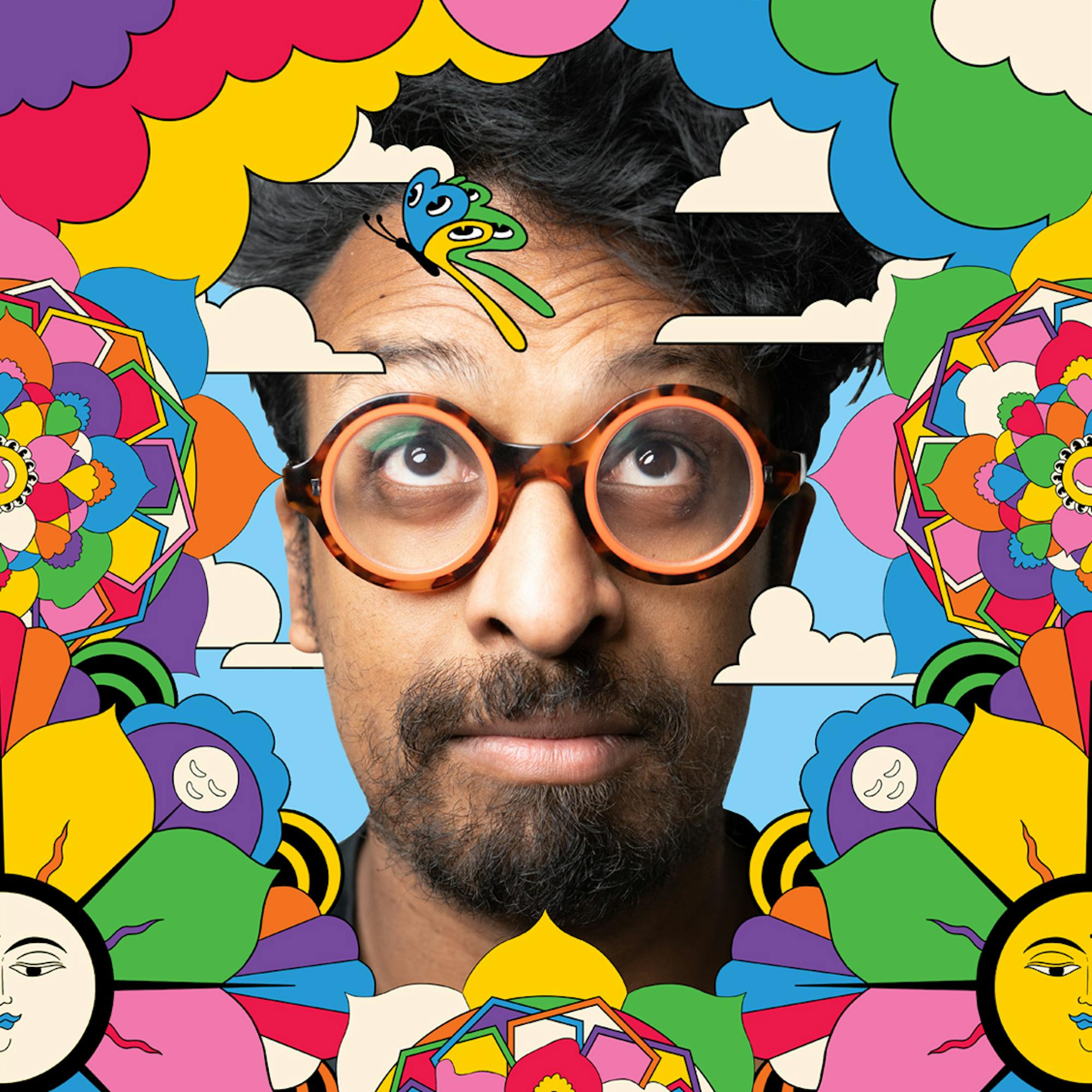
“We've mirrored the inside of the petals to create a cosmos where each mandala is a universe within itself,” says The Different Folk’s Murugiah. “It's a really fun way to talk about the multiverse and the universes within a person. It’s hopefully something people will experience as they walk through the installation – mirroring themselves into an infinite universe.”
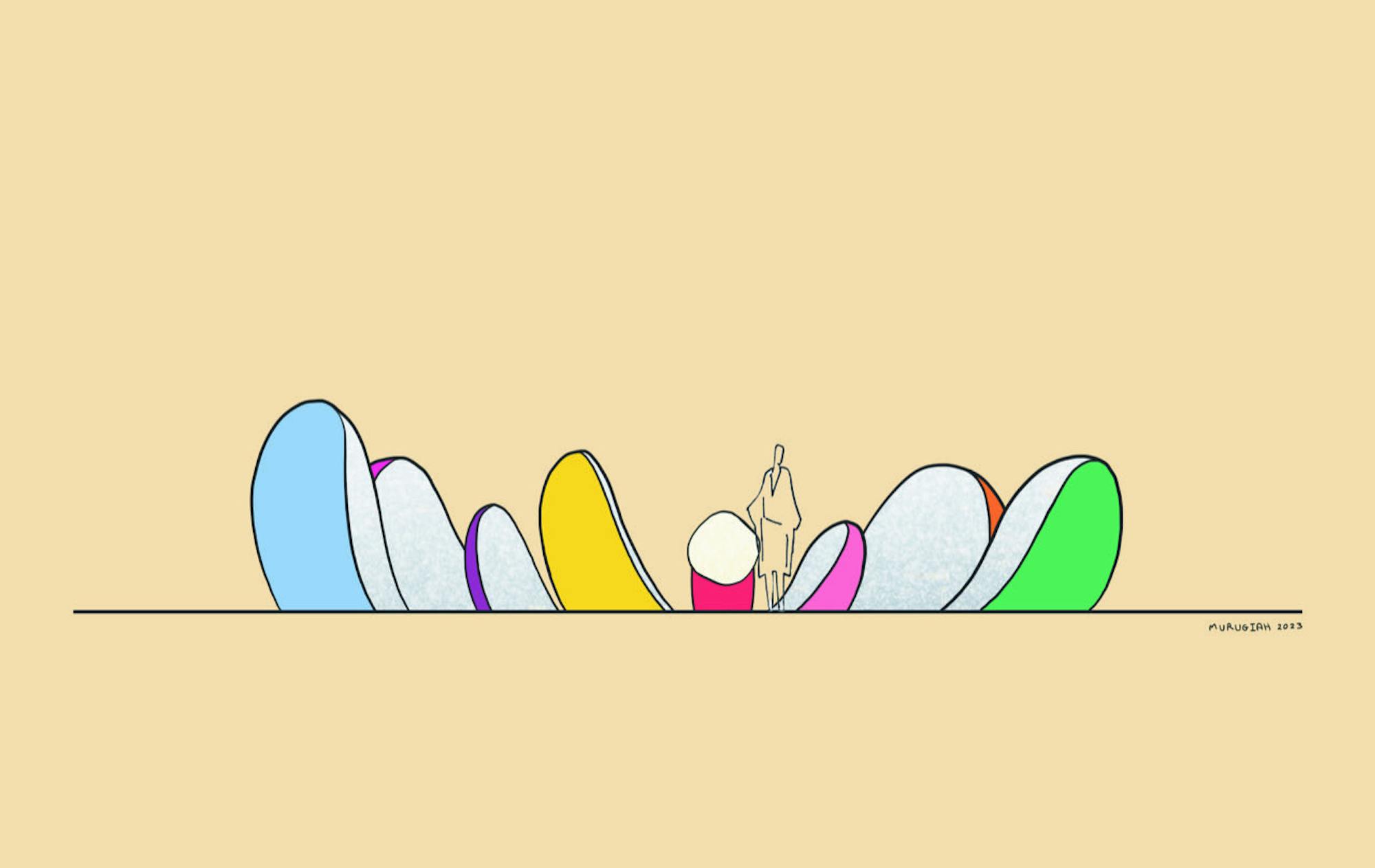
Murugiah is speaking about his first ever installation, Rangoli Mirrored Cosmos, currently in construction at the Greenwich Peninsula. A modern celebration of Diwali, the piece invites people to explore the cosmic significance of the festival and its cultural symbols, including mandalas, used as both a marker of the physical universe and a way to envision the spiritual self.
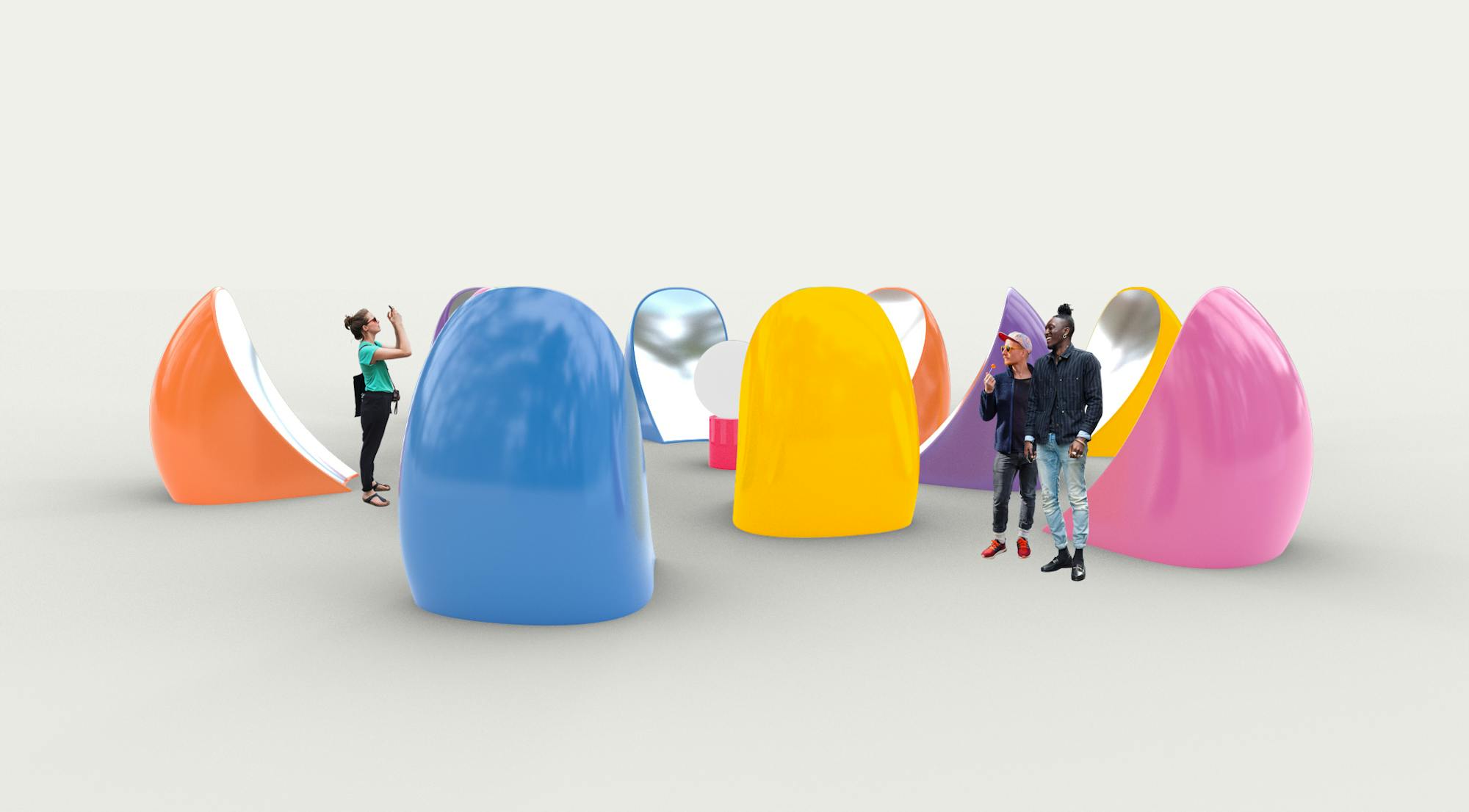
Murugiah’s psychedelic, surrealist work features colourful characters, high-contrast patterns and every shape imaginable – all fixed in dream-like compositions that feel both chaotic yet incredibly purposeful. He may have only been producing such work since 2020, yet he's always been inspired by his lived experience. His other Sri Lankan influences include his eponymous character Muru, whose head is based on a traditional Raksha mask. “Instead of taking it as a direct reference, I used it as a starting-off point, designing my character with my heritage combined with a modern interpretation,” he says.
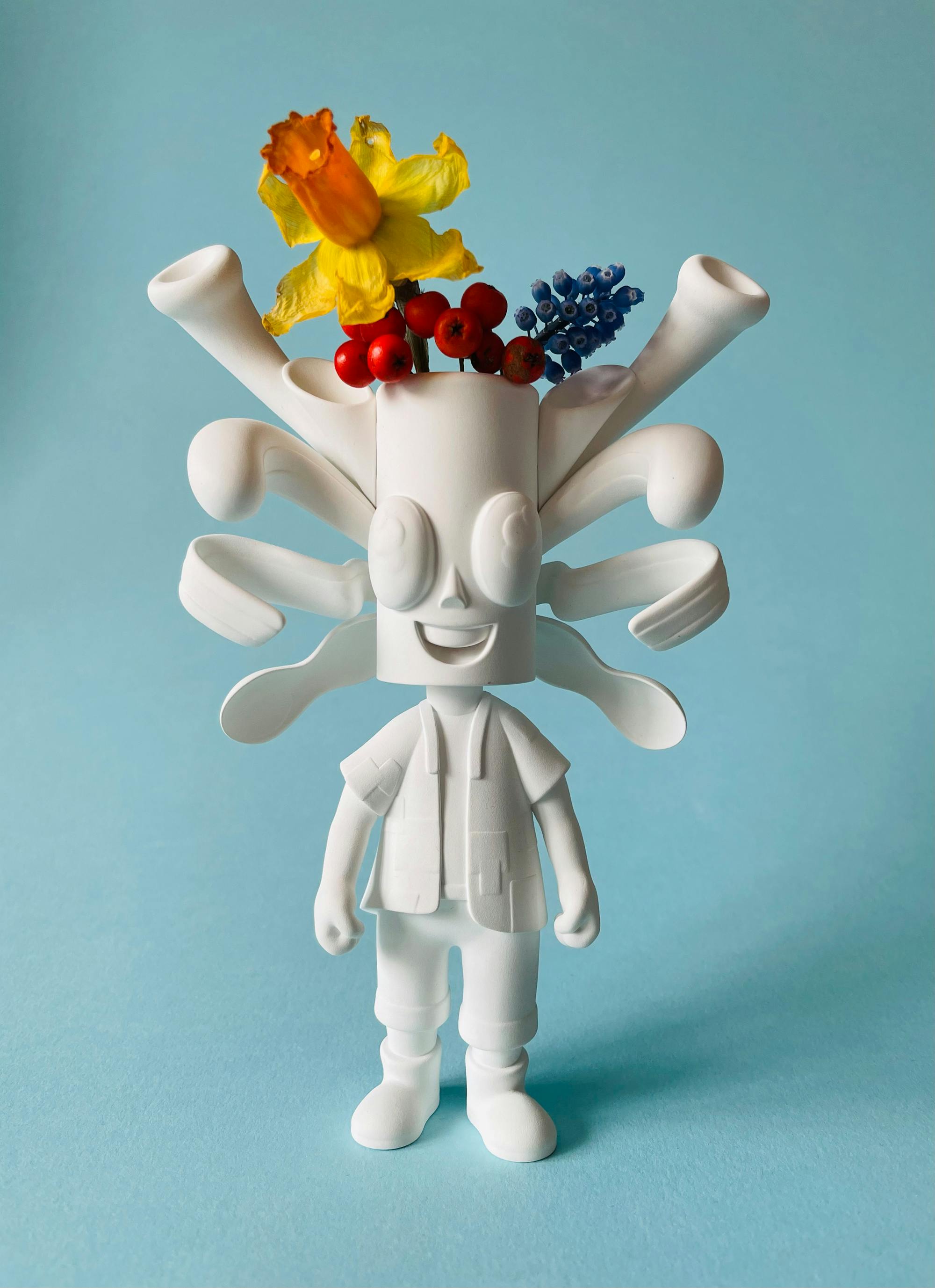
Born in England and raised in Wales, Murugiah describes the connection between his art and his Sri Lankan heritage as one that’s always evolving. Having not visited the South Asian country since he was 16, Murugiah talks about his identity as an artist, and a second generation migrant, as existing somewhere between his birthplace and his lineage.
“I use a lot of reference points in the same way that someone would look at Sri Lankan culture from a far away place,” he says. “My work at the moment is very observational, it's very reference-heavy, pulling from various points of my culture. Maybe down the line, it might be more informed with my relationship to Sri Lanka.”
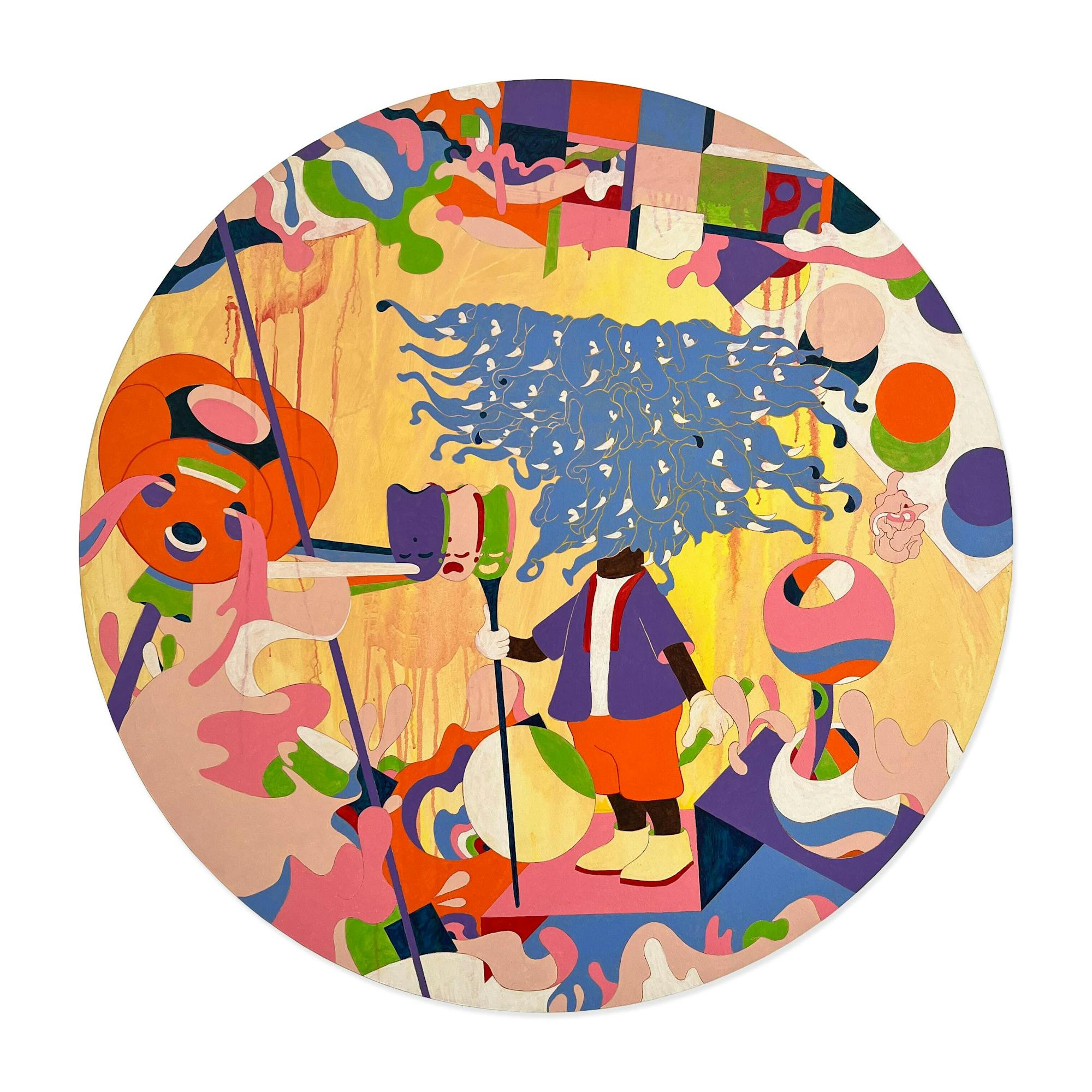
Introducing cultural symbols with a contemporary take is a concept that Murugiah was eager to explore in his project. “The 3D sculpture I've designed is a modern interpretation of a floral rangoli, a decoration you put in the front of your home during festive seasons to bring in good spirits and ward off bad ones,” he adds.
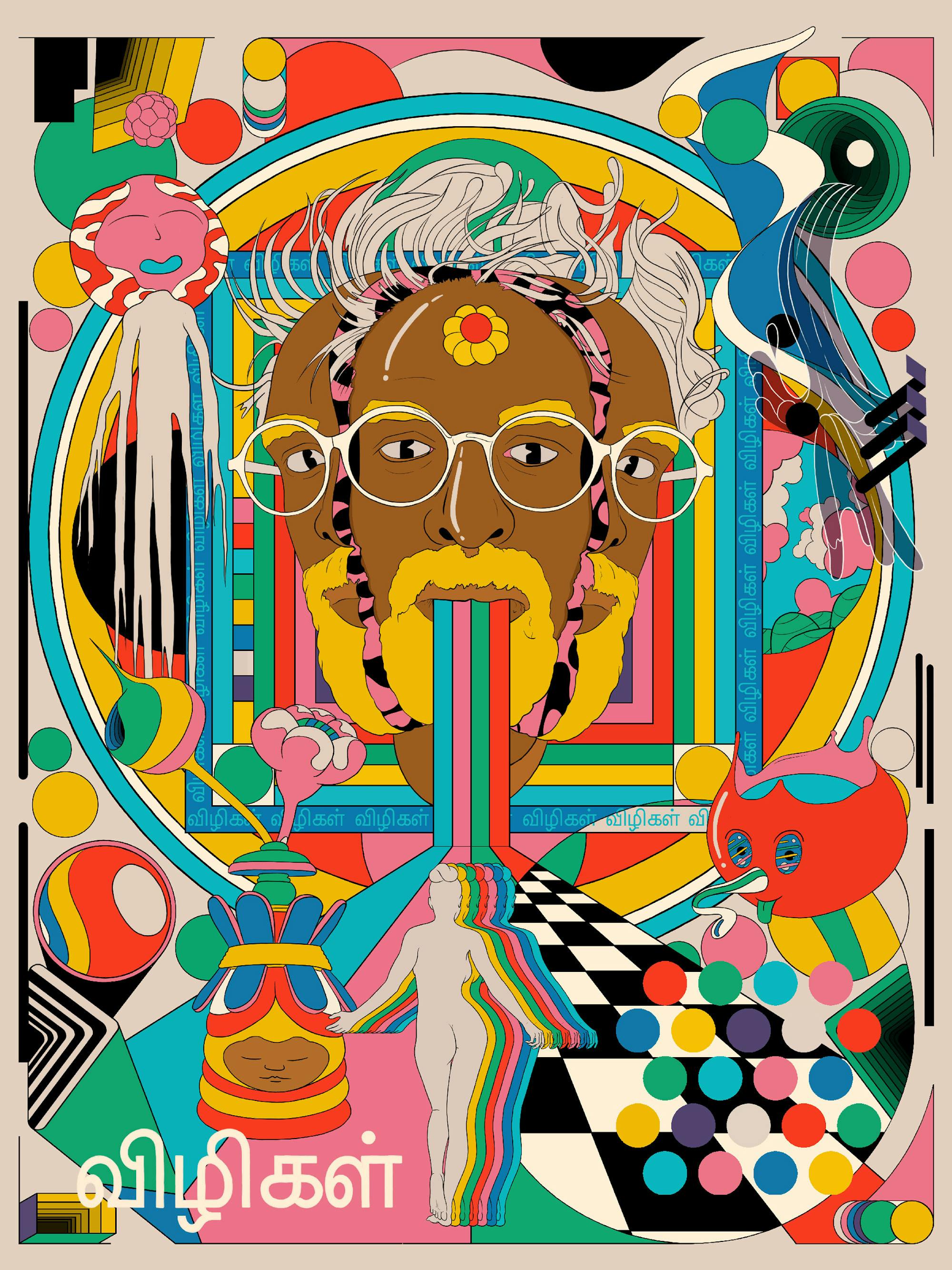
In blending his aesthetic influences, Murugiah creates work that feels personal. As his connection with his heritage deepens, he imagines his art evolving, too. “I think it's very important as an artist for your style, ethos and work to develop over time and for me this is a very exciting way for it to happen,” he tells us. “I have full intentions of going to Sri Lanka and really getting immersed in that world, and I’d like my work to develop in tune with that.”
Murugiah also worked on a project for Refugee Week earlier this year. With the 25th anniversary theme of ‘Compassion’, arts organisation Counterpoints approached Murugiah to work on the design with Compass Collective – an organisation that helps young refugees get into the arts and creative industries. “During the workshop we came up with all the ideas for the campaign poster. It was an amazing experience,” he says
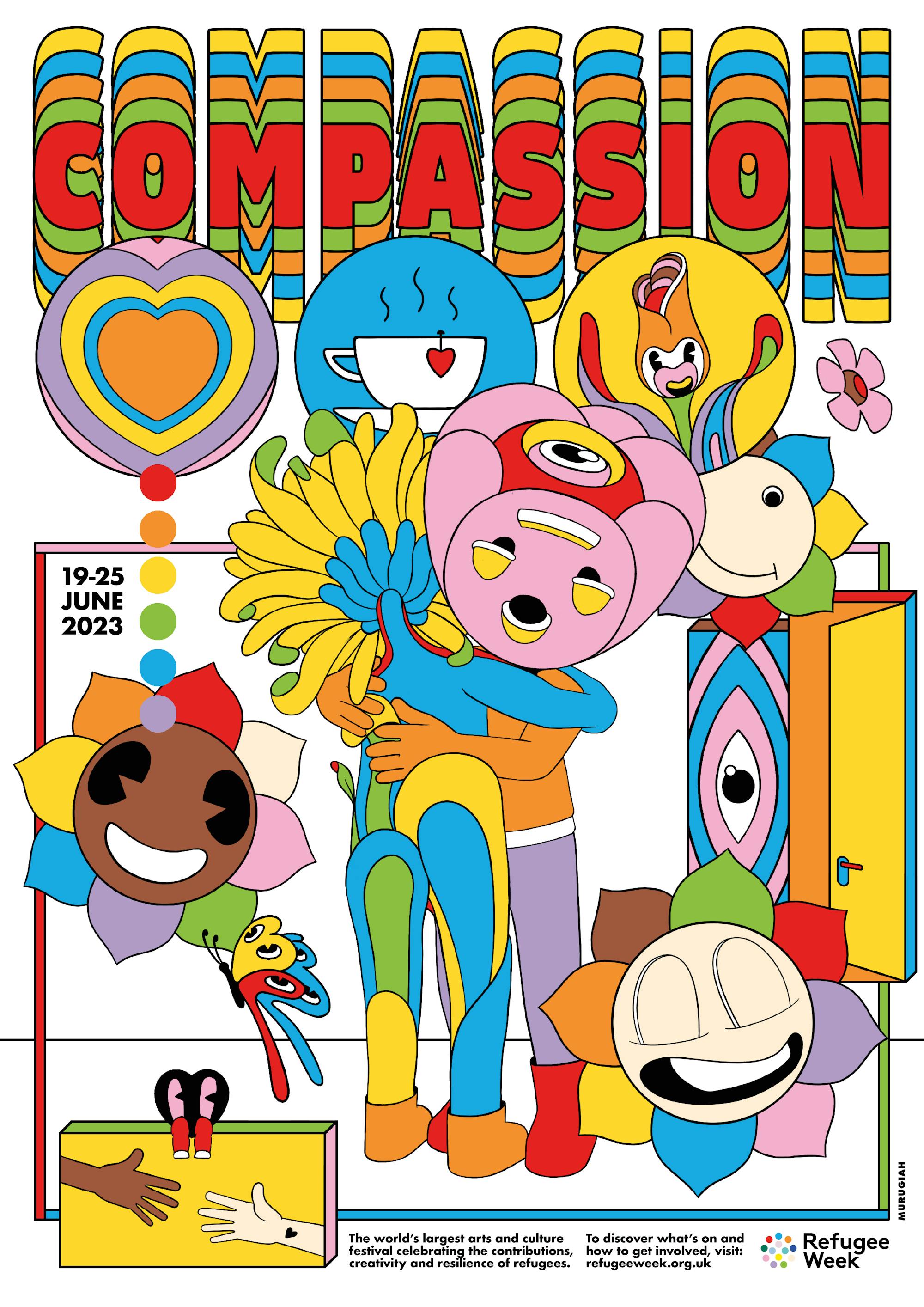
The artwork was transformed into a window display on London’s South Bank. From there, charity Choose Love worked in collaboration with the artists to take it front and centre: Glastonbury’s world-famous Pyramid stage, where the animations played throughout the day, up until and “right before Elton John’s headline set”.
“A lot of people saw that artwork and that’s something that's really special to me,” says Murugiah. “I'm not a refugee myself, but I know what it's like to be made to feel different in your own country. I came to that project from my own experiences, but welcomed new ones from the refugee experience.”
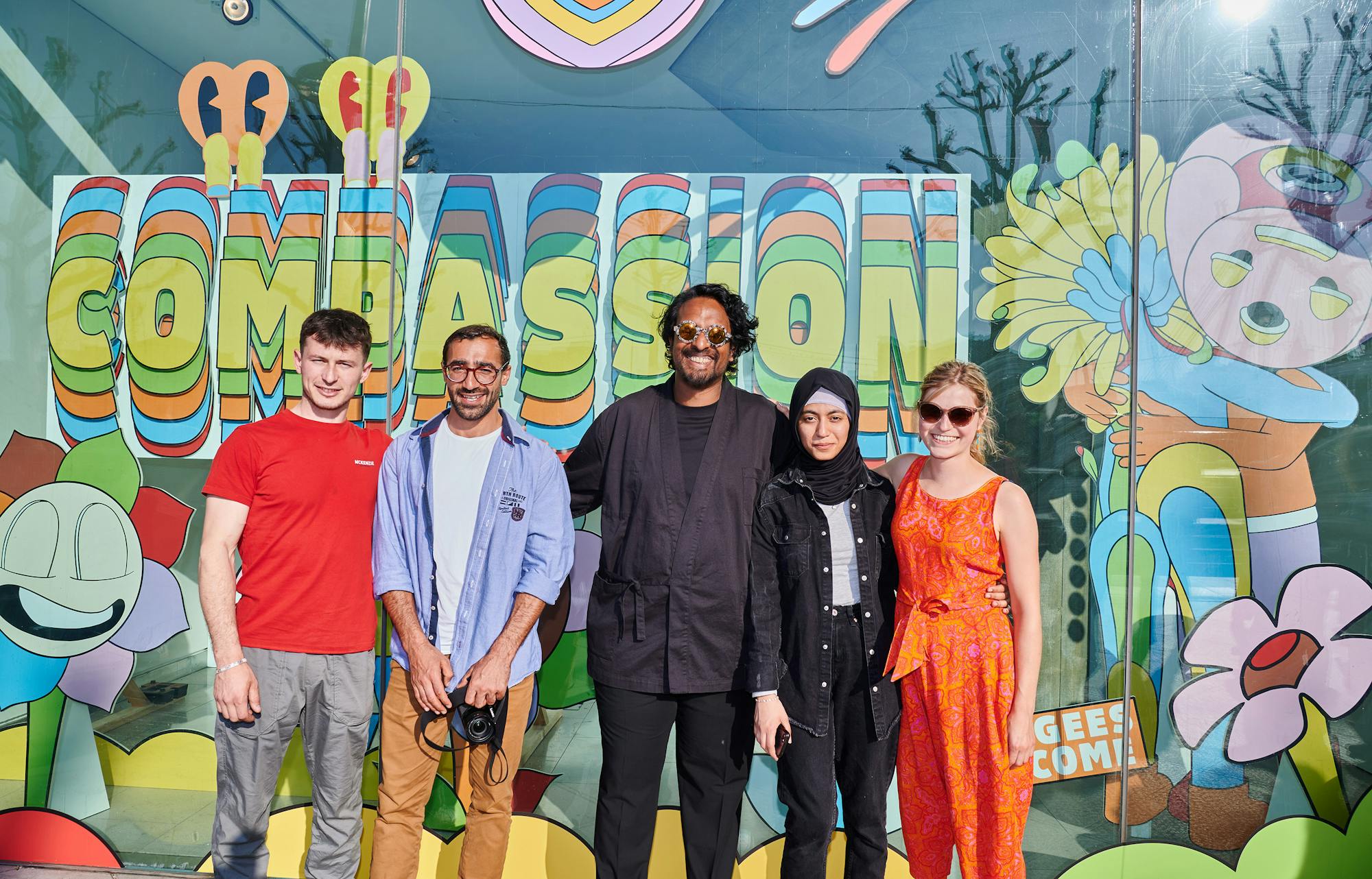
For Murugiah, seeing more South Asian artists is key for improving visibility in the art world. But equally vital is how the industry works with these artists. “It's very important to celebrate your culture and be a voice and a face for your work,” he says. “And for artists of colour, it's very important to see representation. But it's also incredibly important to be made to feel equal in this space. So, being able to do work that isn't associated with your culture or your background is also very important too.”
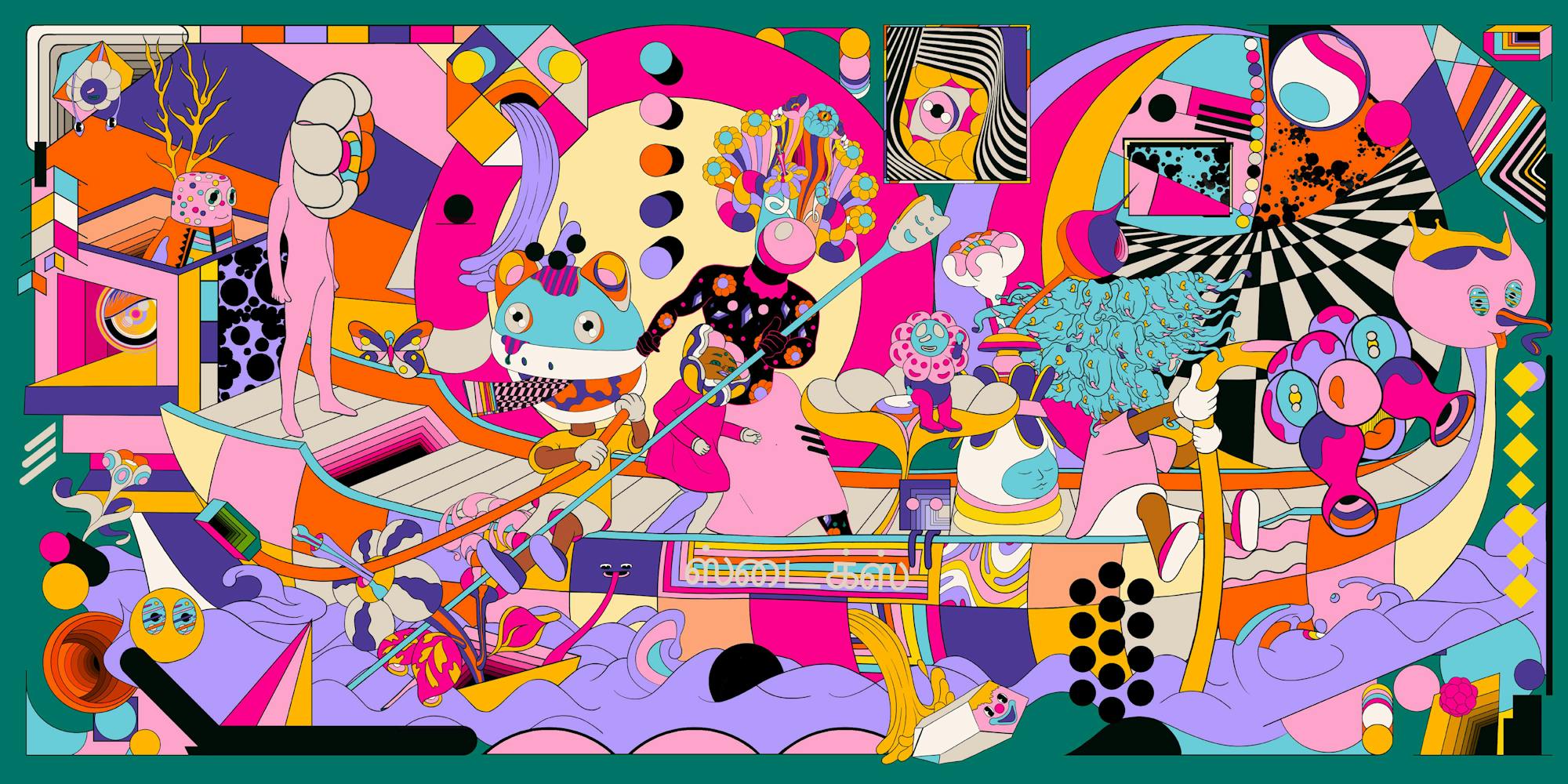
This year has been “one of the best” for Murugiah: from his first installation in the Now Gallery to Glastonbury festival and all of the incredible projects in between. For aspiring illustrators that need some words of wisdom he offers his help via DMs. “I had strict South Asian parents, so the whole ‘work hard’ ethic is ingrained in me,” he says, jokingly. “I’m sure I can instil that in someone else.”
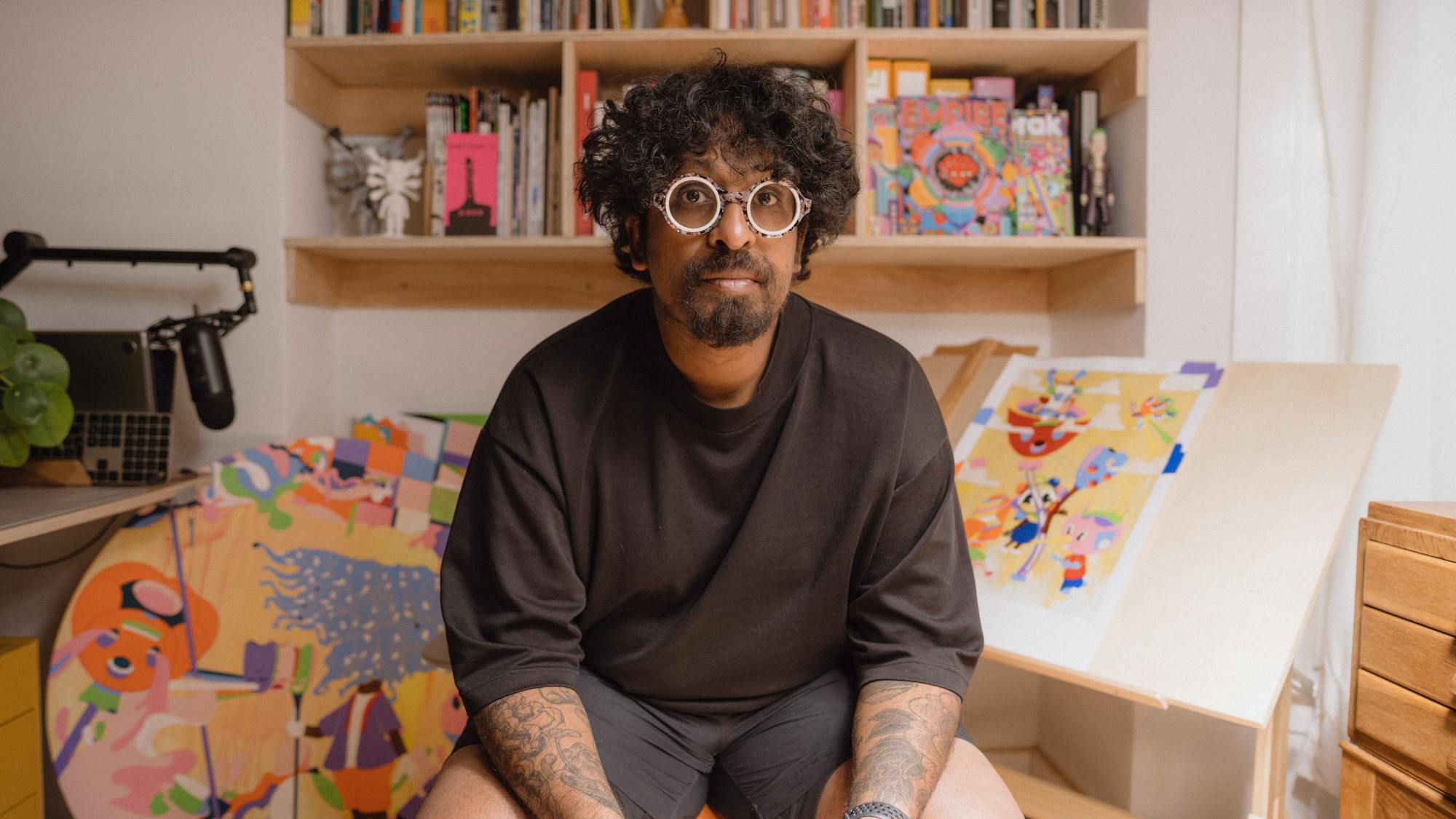
Discover Murugiah’s work. Learn more about South Asian Heritage month here.
Stay in the loop
A lot can happen in a month, so we thought we’d write it all down on one virtual piece of paper. Sign up to receive a friendly message in your inbox.
